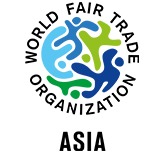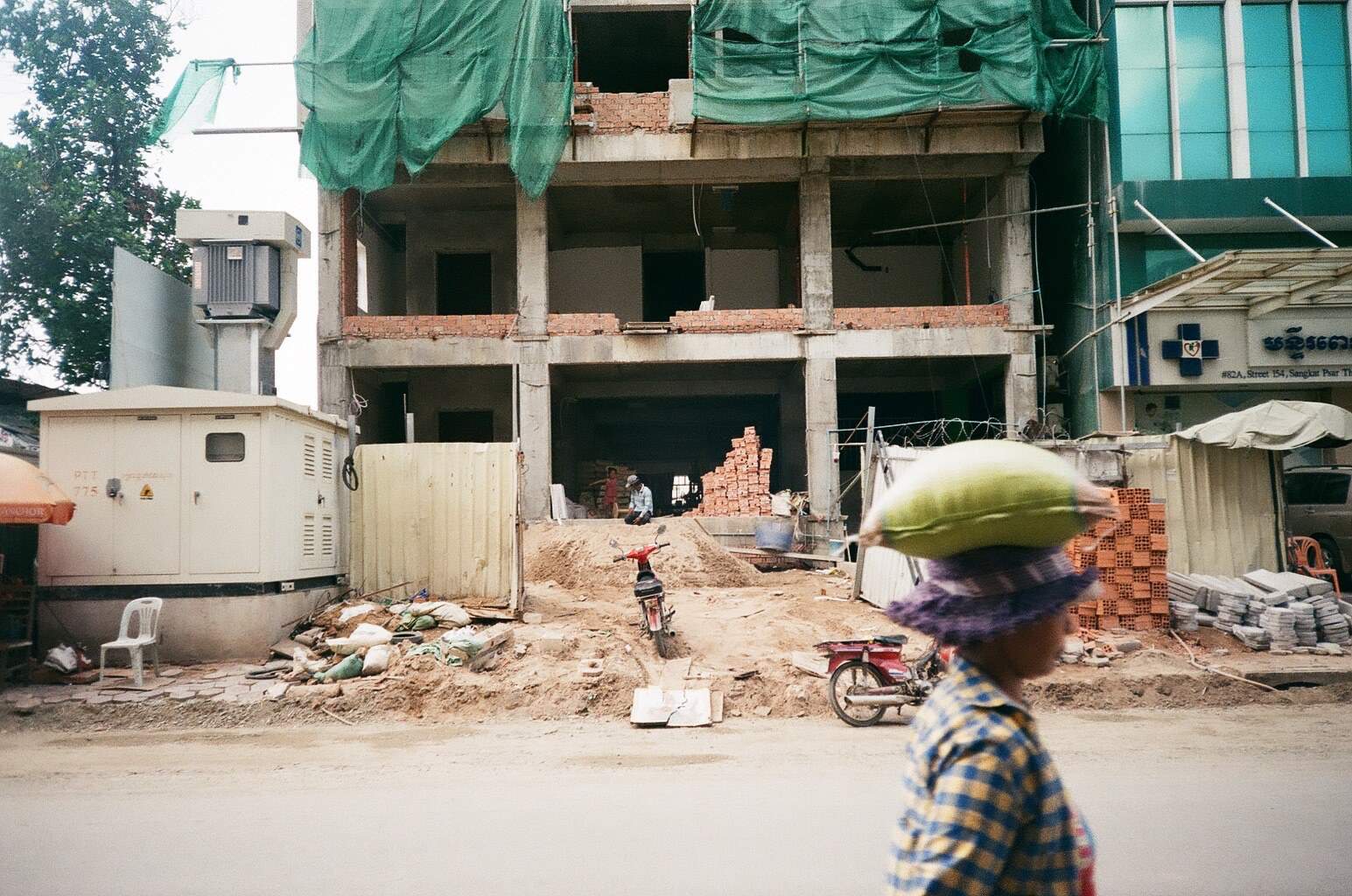
Since the end of the Khmer Rouge regime in 1999,[1] Cambodia has been in a strenuous process of reconstruction. The turn of the century brought rapid economic growth – from being one of the poorest countries in the world, Cambodia developed into a lower-middle income economy.[2]
This process of reconstruction is certainly not a stable one. The 2008 global financial crisis caused economic downturn in Cambodia, though its garment and tourism industries soon flourished.[3] Severe flooding and deforestation damaged crops and livestock,[4] making development in constant flux.
Cambodia today is, quite literally, under construction. Dust and construction noise fill the streets of Phnom Penh. Luxury hotels, artisanal bakeries, and boutiques are popping up across the city, surrounding a new mall that caters toward middle to high income residents. To many, the cost of living in Phnom Penh is unaffordable.[5] But wages remain low to ensure some standing in a competitive global market.
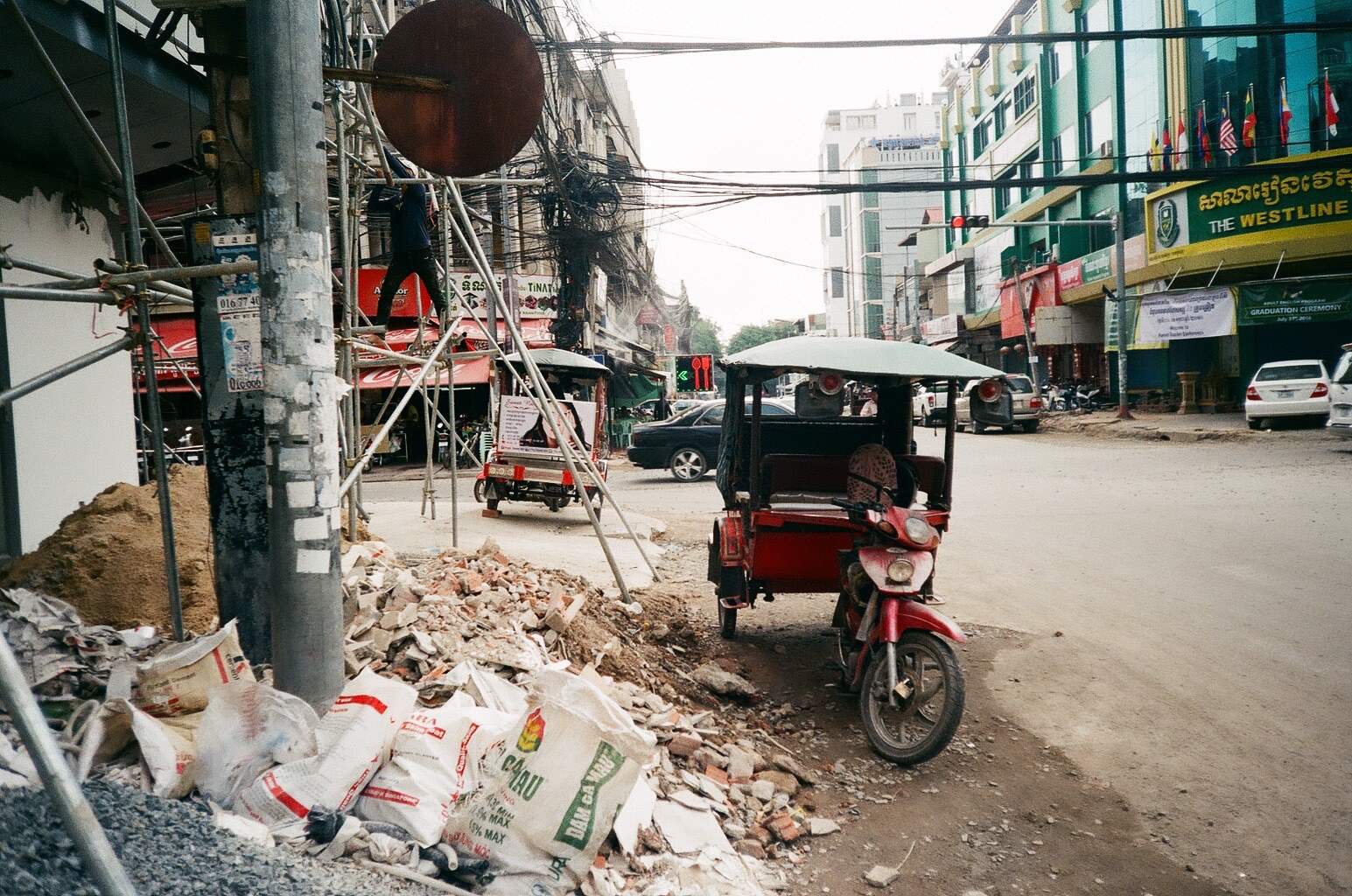
Despite the low wages, Cambodia’s garment industry provides one of the better forms of employment available to women. According to the Organization for Economic Cooperation and Development (OECD), textiles represent 72% of Cambodia’s exports.[6] Hundreds of thousands of Cambodians now travel along dusty roads to the garment district outside of Phnom Penh, working an average of 56 hours a week.[7]
Men Sinoeun, executive director of Artisans’ Association of Cambodia (AAC), adds that “since garment workers don’t know how to do business, they rely on middle men that make three times the profit from the finished product.” His goal is to transform members of AAC into sustainable private businesses. In his words, “to be big bosses themselves.”
The concentration of garment factories near Phnom Penh brings up another issue: garment workers are faced with the difficult choice of living with their family or earning a wage.[8] Jung-min Han, founder of Goel Community, says that “working conditions in garment factories are not as good as those in traditional weaving communities, where Cambodians can work in their own home and care for their children and livestock.”
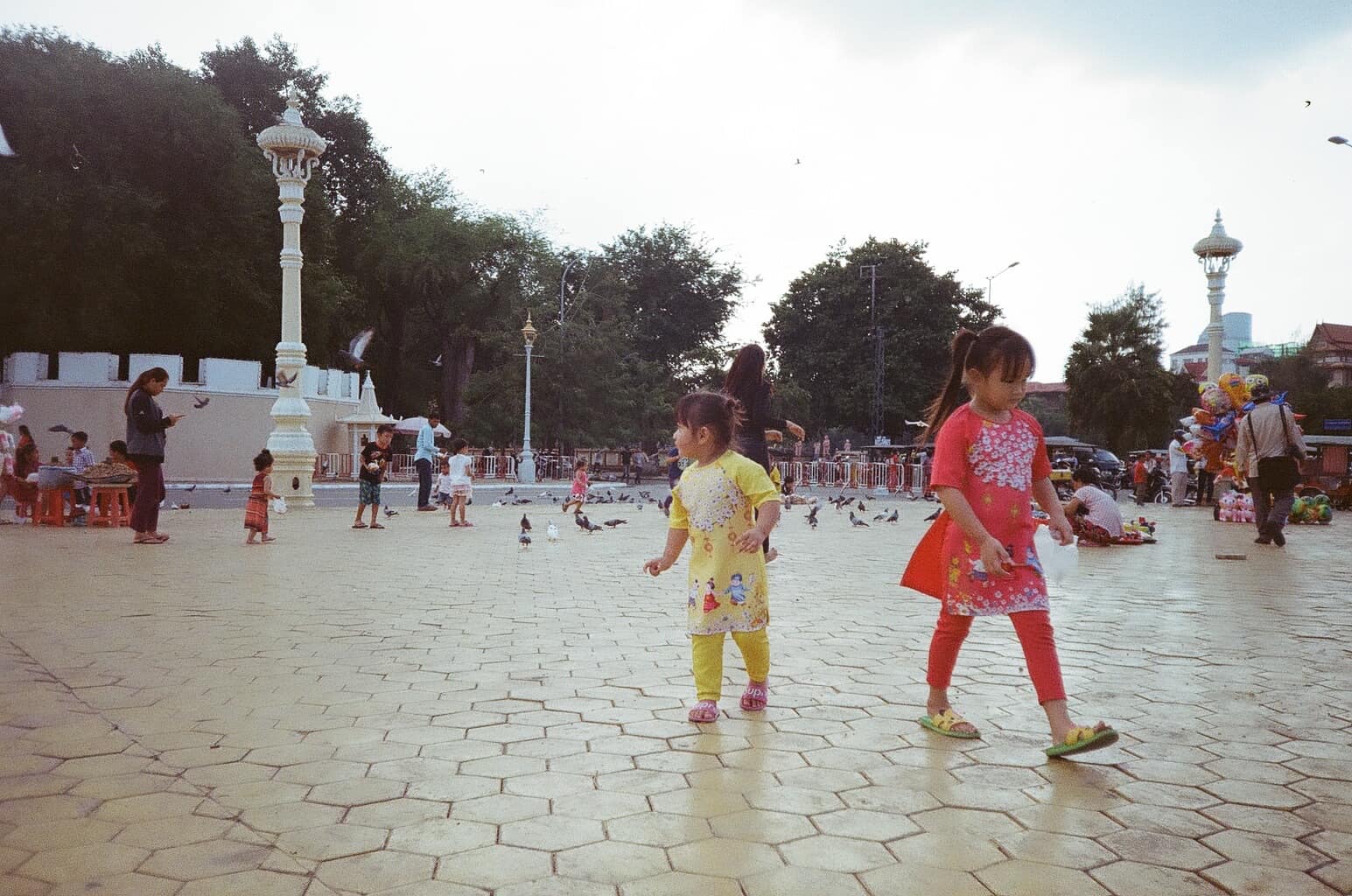
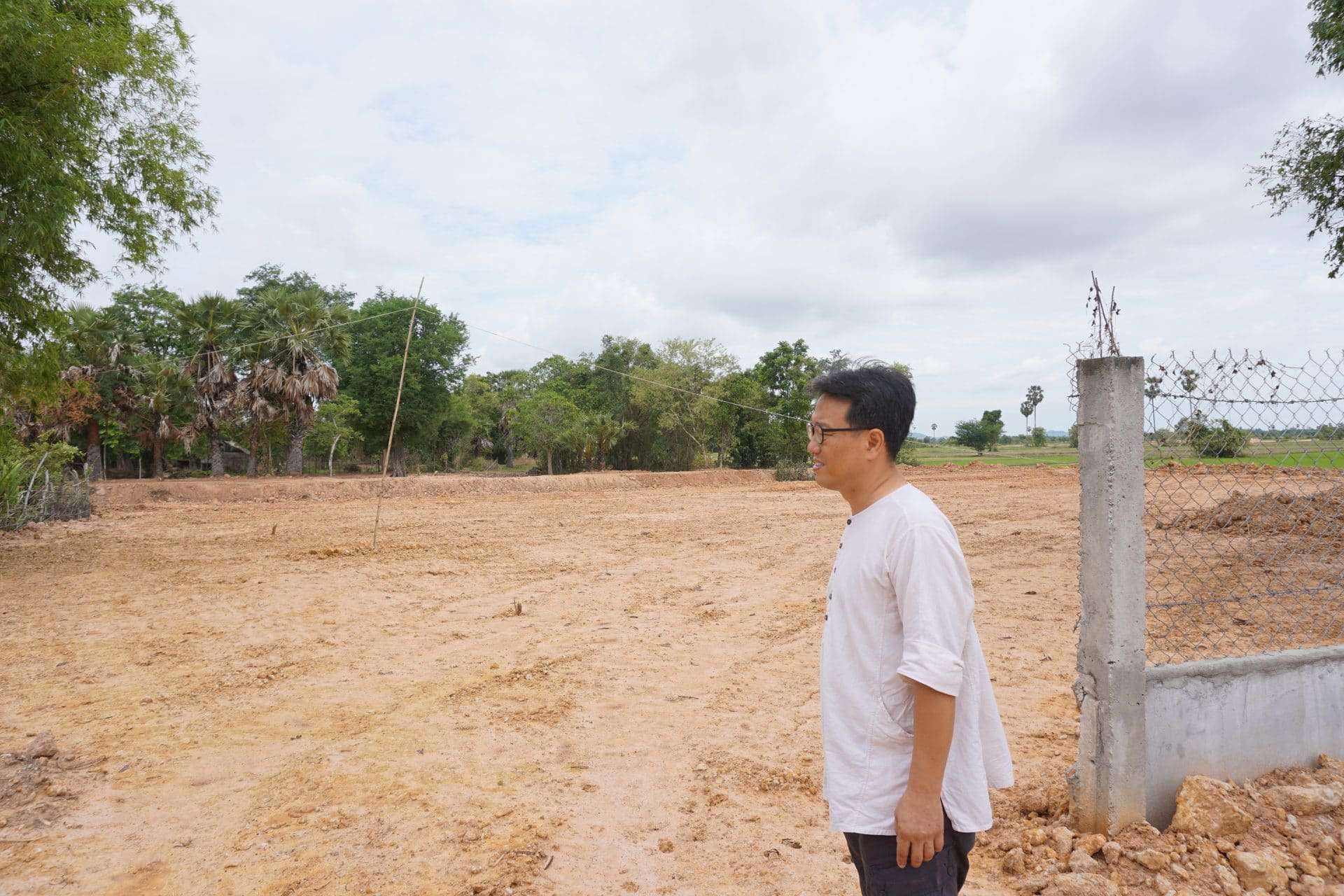
Han aims to strengthen the traditional weaving industry with more job opportunities, but notes that it needs to establish a fair wage. He also urges national and international institutions to preserve Cambodia’s weft ikat technique. “Each family has it’s own designs, and we’ve already lost a lot of them.”
Loss is something Cambodians are familiar with. The destruction of art, culture, heritage, land, health, and education under the Khmer Rouge regime finally hit a turning point in 1993. “When the UN came, things changed. Since then, we’ve inherited an NGO mindset,” says Sinouen.
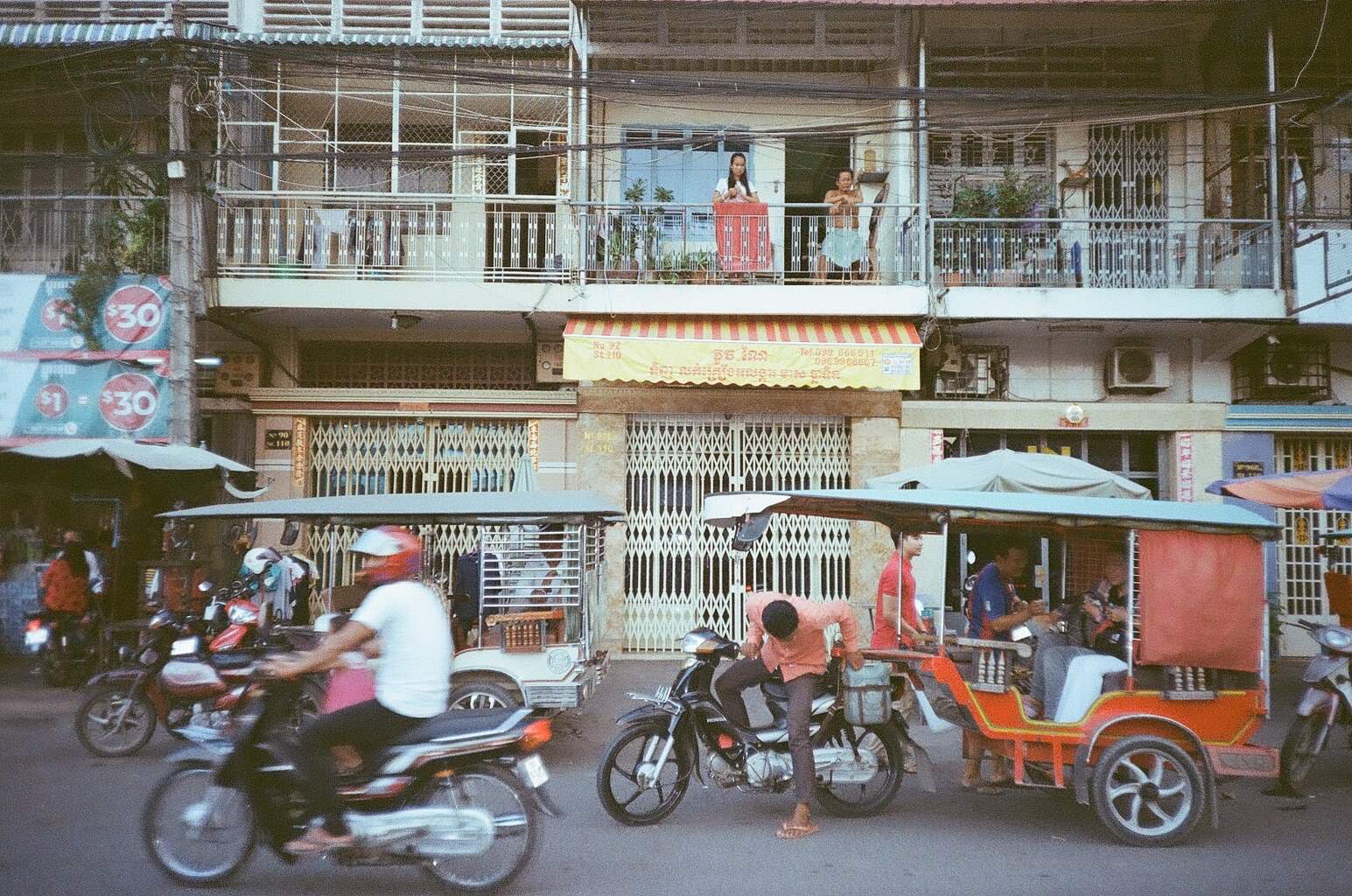
Norm Anak, director of Villageworks Songkhem, says that “a lot of businesses have social understanding, but they’re not Fair Trade certified or regulated.” This leaves Cambodia with great potential to be a nation active in Fair Trade.
Of course, social enterprises are part of a larger economic environment. “The change is too fast. It’s artificial. The city and the province are like two different worlds.” The development of Phnom Penh and its surroundings traps low income Cambodians in polluted areas with little hygiene. “How can the water flow between the stone?”
“We don’t care how many people are cutting trees, our team is growing them,” says Anak. The challenge for Cambodians is to develop economically in a competitive global market while reconstructing their social losses. Without social value as a priority, business will easily be seen as a better alternative to no business at all.
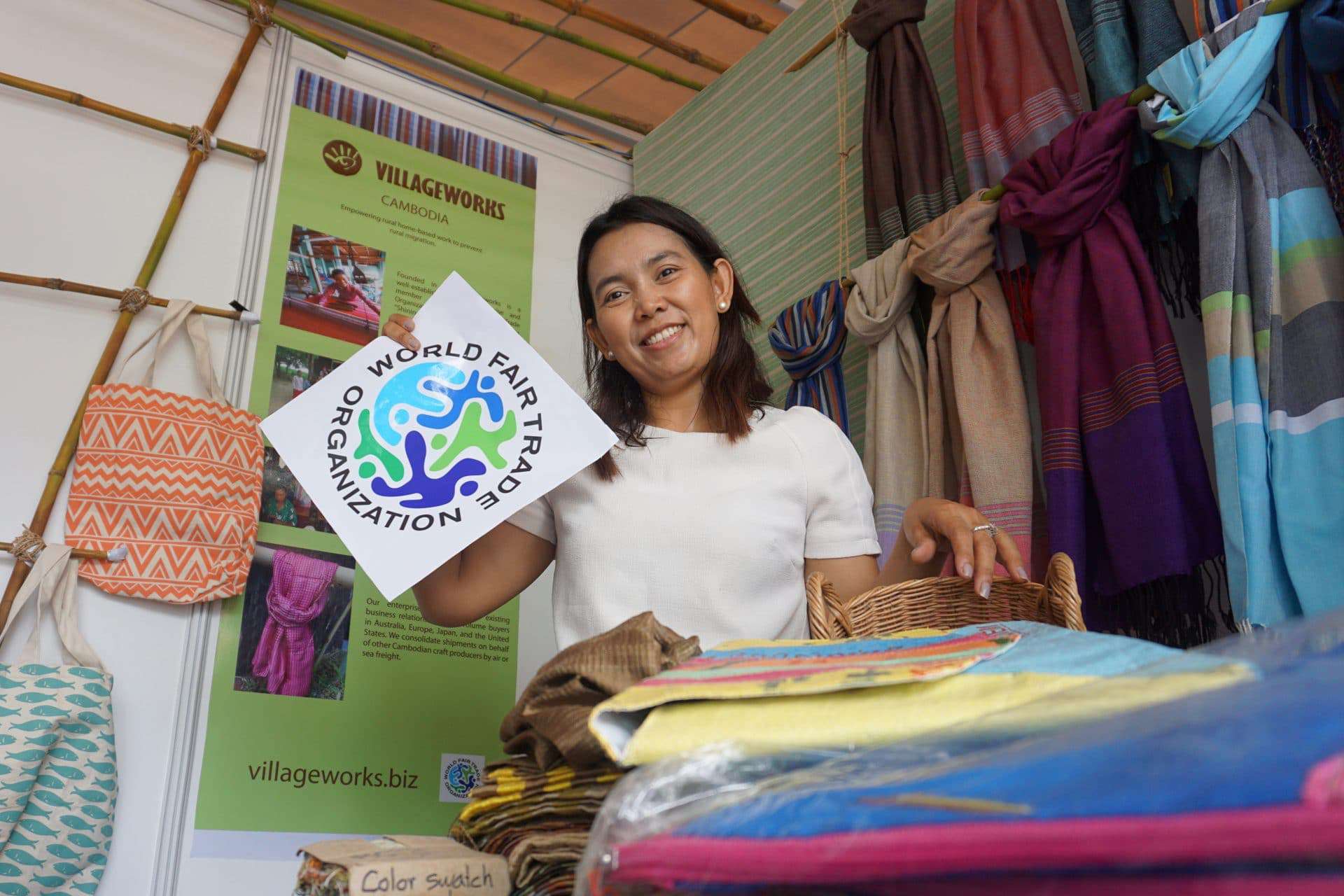
Norm Anak, director of Villageworks Songkhem, Cambodia
__________________________________________________________
[1] Miranda Leitsinger and Casey Tolan, “A Timeline of the Khmer Rouge Regime and Its Aftermath,” CNN.com, last modified April 16, 2015, http://www.cnn.com/2014/08/06/world/asia/cambodia-khmer-rouge-timeline/index.html.
[2] Jai S. Mah, “Globalization and Economic Growth in Cambodia,” The Singapore Economic Review 62, no. 2 (2017): 363.
[3] Kheang Un, “Cambodia in 2011: A Thin Veneer of Change,” Asian Survey 52, no. 1 (2012): 208.
[4] Ibid., 208–209.
[5] Anna Shea, Mariko Nakayama, and Jody Heymann, “Improving Labour Standards in Clothing Factories,” Global Social Policy 10, no. 1 (2010): 106.
[6] OECD, “Structural Policy Country Notes: Cambodia,” Structural Policy Challenges for Southeast Asian Countries (2013): 2.
[7] Shea, 86.
[8] Shea, 106.
[6] Social Enterprise Cambodia, http://socialenterprisecambodia.org/maps.
__________________________________________________________
Author: Beata Carissa, Communications & Media Intern
Photo Credit: Beata Carissa
